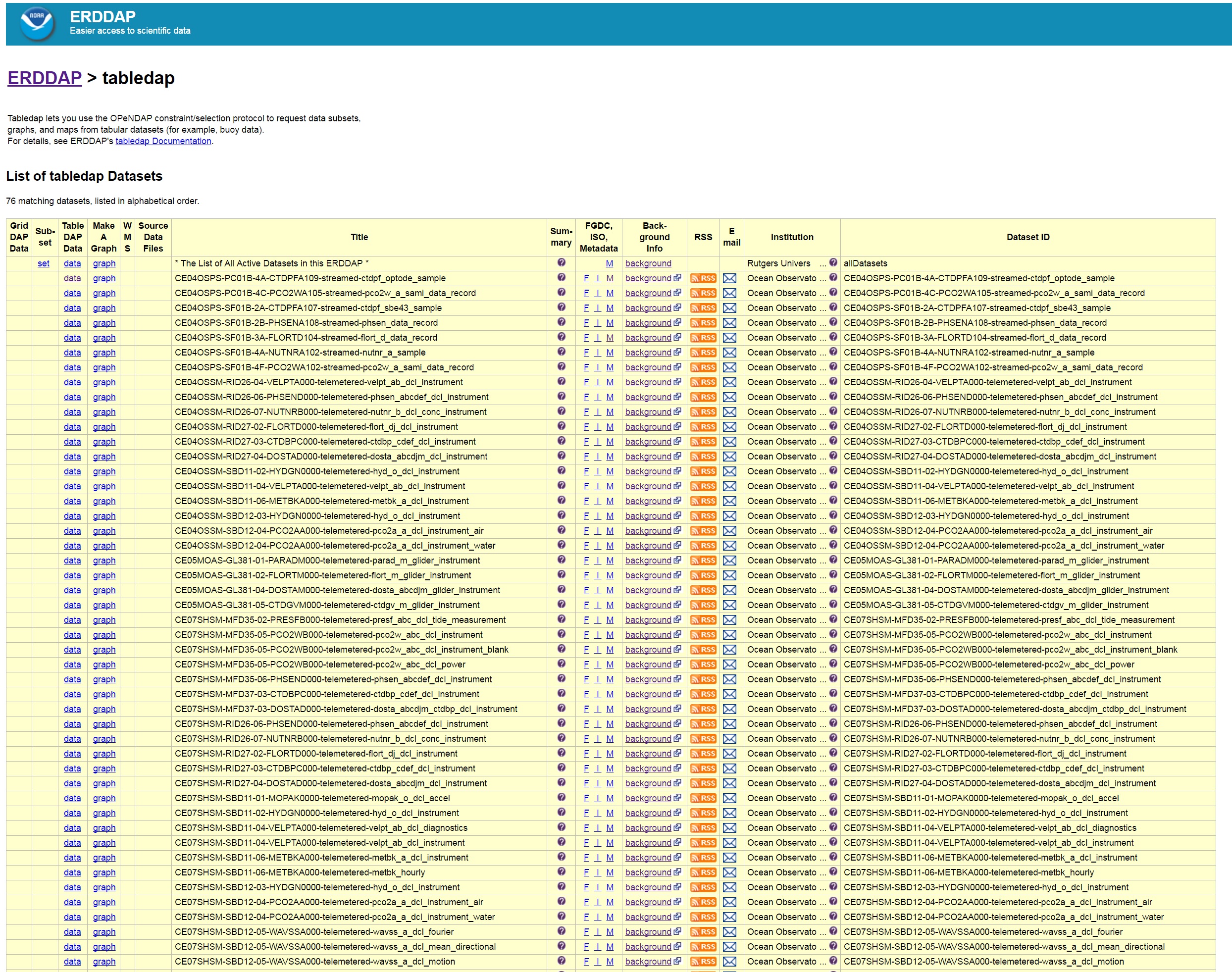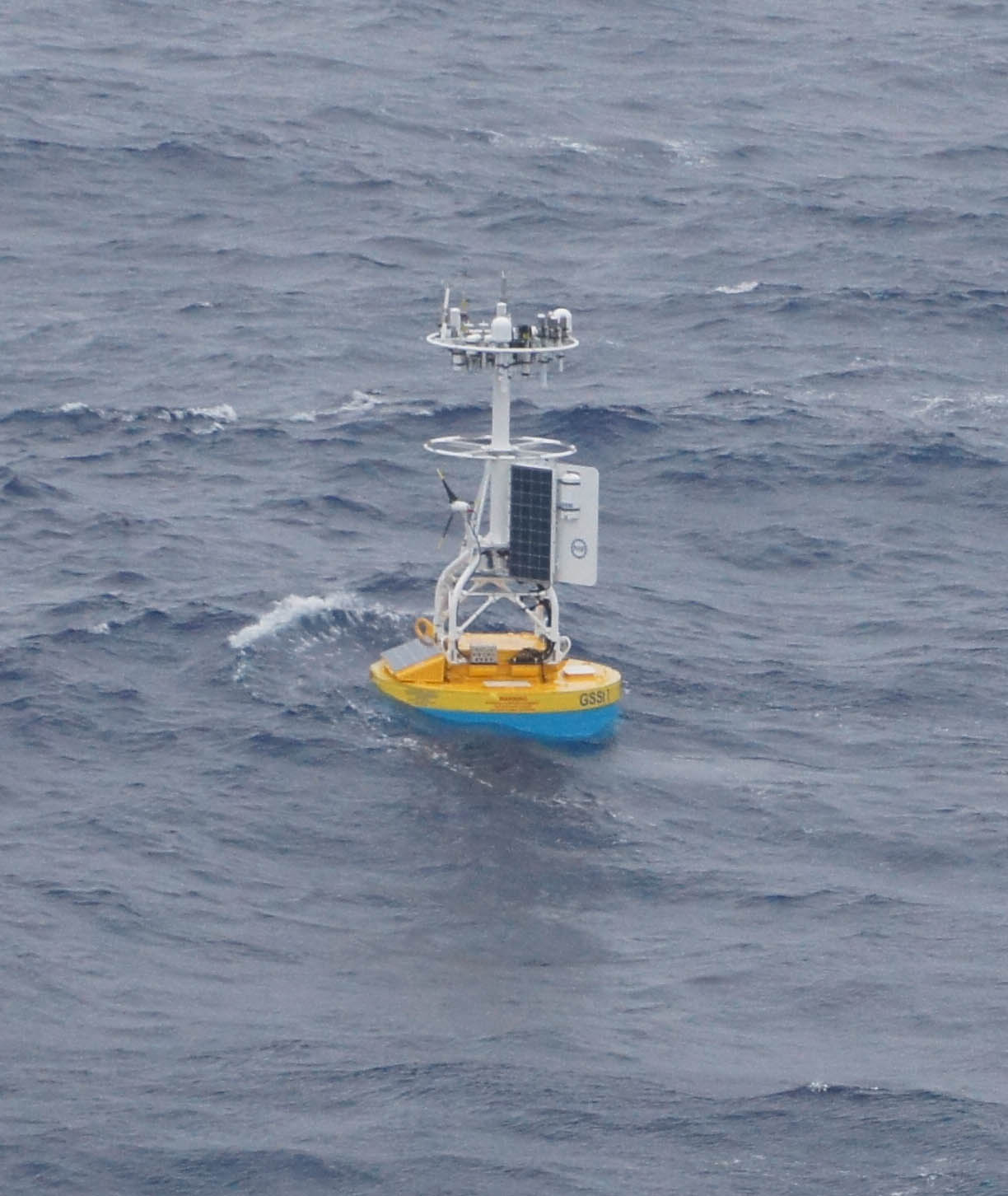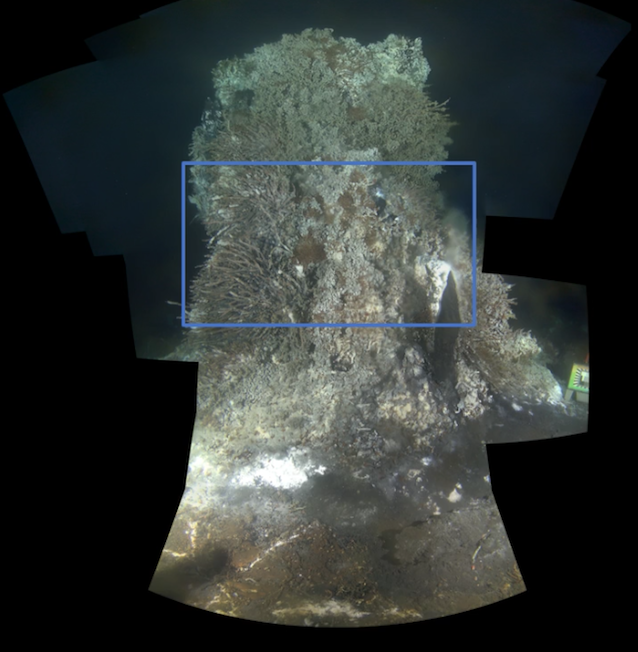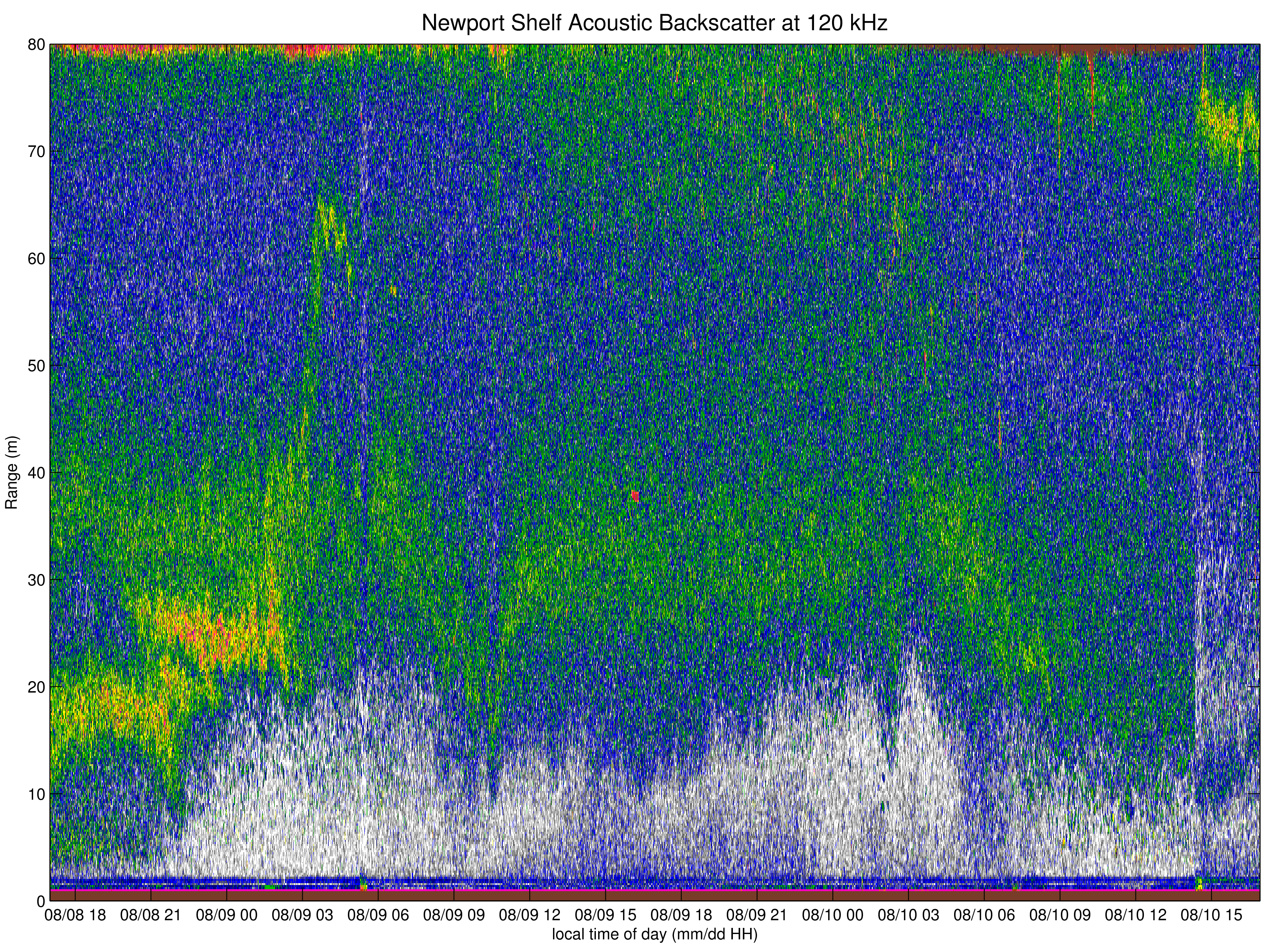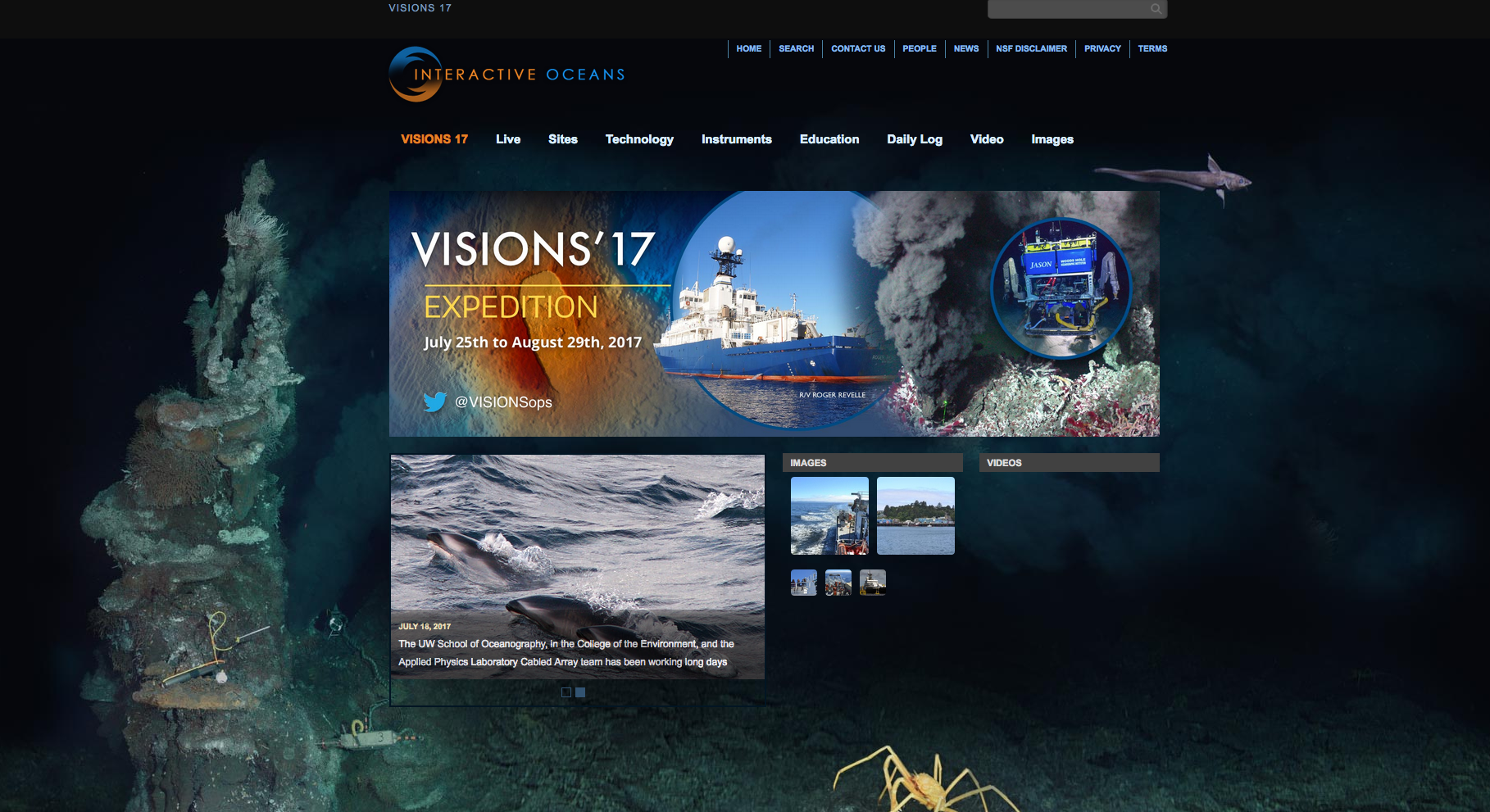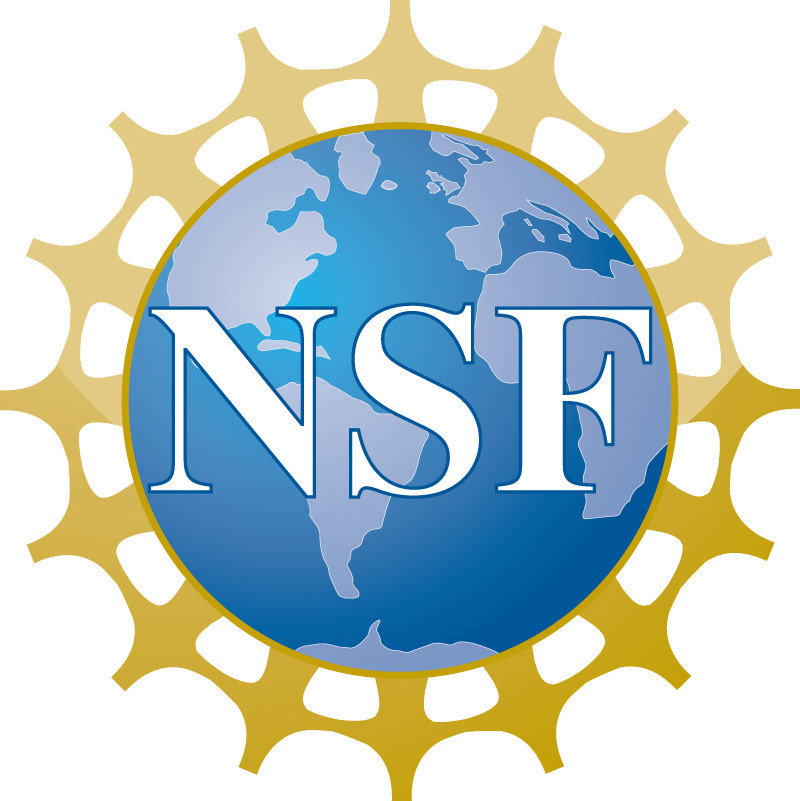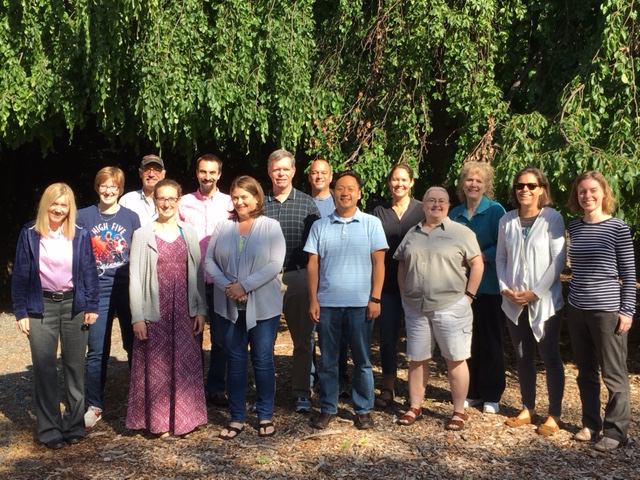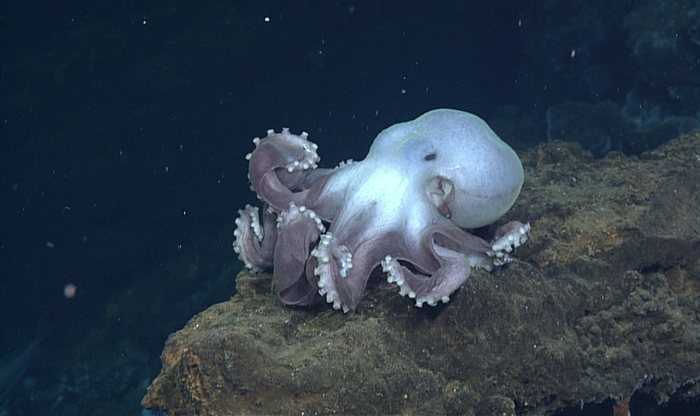News
Senior Program Specialist, Ocean Observatories Initiative
The Consortium for Ocean Leadership is seeking a Senior Program Specialist. This is a temporary, full-time position scheduled to last through September 30, 2018, with the possibility of extension pending funding availability. The position will report to the Vice President, Research and Education.
Read MoreOOI ERDDAP Server Now Online
The OOI ERDDAP server is now online hosting uncabled, telemetered data from OOI moorings and gliders.
Read MoreOOI Southern Ocean Array (55S, 90W) provides critical weather forecast data
Data from the OOI Southern Ocean Array Surface Mooring have been integrated into the World Meteorological Organization’s Global Telecommunication System, making these data more easily accessible for weather forecasters and modelers.
Read MoreNew Computer Vision Routine Developed for CAMHD Time-Lapse Video
A new computer vision routine, developed by Aaron Marburg at UW-APL and aided by Tim Crone at LDEO and Friedrich Knuth at Rutgers, is now able to correctly identify and tag scenes of scientific interest in the CAMHD video stream. These scenes were previously being manually identified by students at Rutgers University, a process which has been greatly accelerated by the team’s work. With this enhanced metadata record, a brand new set of time lapse videos has been created, displaying a frame captured every three hours from November, 2015 to July, 2016. There are 9 scenes of scientific interest, which are recorded at two or three zoom levels, depending on the camera routine. The naming convention for the videos is deployment_(dx) position_(px) zoom-level_(zx). For more information on the different scene tags, see the regions description on GitHub.
Position: 0
[threecol_one]Zoom Level: 0
[/threecol_one]
[threecol_one]
Zoom Level: 1
[/threecol_one]
[threecol_one_last]
Zoom Level: 2
[/threecol_one_last]
Position: 1
[threecol_one]
Zoom Level: 0
[/threecol_one]
[threecol_one_last]
Zoom Level: 1
[/threecol_one_last]
Position: 2
[threecol_one]
Zoom Level: 0
[/threecol_one]
[threecol_one_last]
Zoom Level: 1
[/threecol_one_last]
Position: 3
[threecol_one]
Zoom Level: 0
[/threecol_one]
[threecol_one]
Zoom Level: 1
[/threecol_one]
[threecol_one_last]
Zoom Level: 2
[/threecol_one_last]
Position: 4
[threecol_one]
Zoom Level: 0
[/threecol_one]
[threecol_one]
Zoom Level: 1
[/threecol_one]
[threecol_one_last]
Zoom Level: 2
[/threecol_one_last]
Position: 5
[threecol_one]
Zoom Level: 0
[/threecol_one]
[threecol_one]
Zoom Level: 1
[/threecol_one]
[threecol_one_last]
Zoom Level: 2
[/threecol_one_last]
Position: 6
[threecol_one]
Zoom Level: 0
[/threecol_one]
[threecol_one]
Zoom Level: 1
[/threecol_one]
[threecol_one_last]
Zoom Level: 2
[/threecol_one_last]
Position: 7
[threecol_one]
Zoom Level: 0
[/threecol_one]
[threecol_one_last]
Zoom Level: 1
[/threecol_one_last]
Position: 8
[threecol_one]
Zoom Level: 0
[/threecol_one]
[threecol_one_last]
Zoom Level: 1
[/threecol_one_last]
Resources
Raw Data Archive – Access to raw video data files in .mp4 and .mov format
Live Video Feed – Live video from Axial Seamount, every 3 hours for 15 minutes
CamHDAnalysis – Computer vision routine used to create metadata and time lapse videos
CamHD Compute Engine – Open access processing platform to use and develop CAMHD processing code
Download Time-Lapse Videos – Shared drive that permits download of the time-lapse videos displayed above
References
Crone, T.J., Marburg A., Knuth F. A, Using the OOI Cabled Array HD Camera to Explore Geophysical and Oceanographic Problems at Axial Seamount, presented at the 2016 Fall Meeting, AGU, San Francisco, CA
Knuth, F. A., Marburg, A., Crone, T. J. (2017) Deriving Quantitative Metrics from OOI High-Definition Video Data for the Purpose of Automated QA/QC, Oceans 2017 MTS/IEEE, Anchorage, AK, September 18-21
Knuth, F.A., Marburg, A., Belabassi L., Garzio, L., Smith, M., Vardaro, M. (2016) Automated QA/QC and Time Series Analysis on OOI High-Definition Video Data. Oceans 2016 MTS/IEEE Proceedings.
Marburg, A., Knuth, F. A., Crone, T. J. (2017) Cloud-Accelerated Analysis of Subsea High-Definition Camera Data, Oceans 2017 MTS/IEEE, Anchorage, AK, September 18-21
Funding
National Science Foundation, Cloud-Capable Tools for MG&G- Related Image Analysis of OOI HD Camera Video, Award #1700923
For additional information please contact: help@oceanobservatories.org
Read MoreAugust 21 Eclipse-Related Data from the Endurance Array
On August 21, the path of totality of the “Eclipse Across America” will pass directly over two OOI Coastal Endurance Array Surface Moorings. These moorings will “see” the eclipse minutes before it is seen from the mainland.
Read MoreVisions 17 Cruise Underway
On July 27, the R/V Roger Revelle departed Newport, OR to begin VISIONS’17, a 32-day mission to replace and maintain elements of the Cabled Array off the coasts of Oregon and Washington.
Read MoreUsing Big Data in Teaching Undergraduates Using the OOI
Rutgers hosted two Teaching with Data Workshops (New Brunswick, New Jersey, May 19-21, 2017 (chemistry focused), and June 2-4, 2017 (geology focused) in an effort to bring together undergraduate professors, from both community colleges and universities, from ten states to learn the software and explore classroom activities that use OOI data.
Read MoreNSF / OCE update on the Ocean Observatories Initiative (OOI)
As part of its continuing commitment to ensuring the most efficient use of its resources, and consistent with recommendations in the National Academy of Sciences’ 2015 report “Sea Change: Decadal Survey of Ocean Sciences 2015-2025”, the Division of Ocean Sciences (OCE) is working with the Consortium for Ocean Leadership…
Read MoreSuccessful Ocean Chemistry Workshop for Undergraduate Professors
Last weekend a Teaching with Data Workshop (New Brunswick, New Jersey, May 19-21, 2017) brought together undergraduate professors from six states to learn the software and explore pilot content developed by OOI.
Read MoreAxial Seamount Biology Catalog Live
The Axial Seamount Biology Catalog is a collection of stunning video and still imagery obtained during the Construction and Operation and Maintenance phases of the OOI Cabled Array spanning 2011 to 2016. The catalog currently contains 39 unique faunal entries, 63 videos, and 62 images.
Read More

